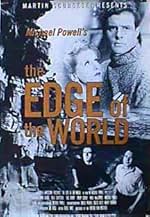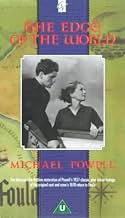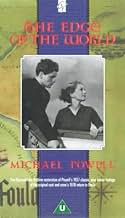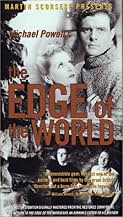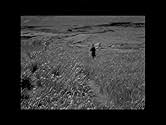VALUTAZIONE IMDb
7,3/10
2269
LA TUA VALUTAZIONE
Aggiungi una trama nella tua linguaA way of life is dying on a remote Scottish island, but some of the inhabitants resist evacuating to the mainland.A way of life is dying on a remote Scottish island, but some of the inhabitants resist evacuating to the mainland.A way of life is dying on a remote Scottish island, but some of the inhabitants resist evacuating to the mainland.
- Regia
- Sceneggiatura
- Star
- Premi
- 1 vittoria e 1 candidatura in totale
Niall MacGinnis
- The Gray Family: Andrew, His Son
- (as Niall Macginnis)
James Garrioch
- Doctor Attending Ruth's Baby in Lerwick
- (non citato nei titoli originali)
Andy Gear
- Villager in Evacuation
- (non citato nei titoli originali)
Mima Gear
- Villager in Evacuation
- (non citato nei titoli originali)
Wullie Gear
- Fiddler at Hirta Reel
- (non citato nei titoli originali)
Aggie Jean Gray
- Member of the Congregation
- (non citato nei titoli originali)
Agnes 'Nannie' Gray
- Member of the Congregation
- (non citato nei titoli originali)
Edith Gray
- Member of the Congregation
- (non citato nei titoli originali)
James Andrew Gray
- Member of the Congregation
- (non citato nei titoli originali)
Jean 'Jeannie' Gray
- Member of the Congregation
- (non citato nei titoli originali)
Recensioni in evidenza
What's it like to live on a treeless rock in the middle of the roiling north Atlantic. We get a pretty good idea from master film-maker Michael Powell who set up his camera in such a place with a few actors, a scant script, and actual residents as extras. And a heck-of-a movie it is. The result looks like something from the neolithic era, with its crude rock huts, long barren vistas, and a few hunkered-down plants, along with jagged cliffs rising out of the sea like the face of God. One thing for sure -- there's no lack of fresh air .
I can't imagine the movie was made for commercial potential. It resembles Robert Flaherty's gripping documentary of life in the Irish Sea, Man of Aran, which may be why Powell distinguished his effort with a story-line. But the visuals are quite similar. And that's fine, because the craggy vistas are unforgettable. This is close to movie making at its purest and most visual. In fact, on another viewing, I think I'll turn off the sound and simply gasp at the other-world imagery.
The story may be secondary, but it's appropriate. The few remaining islanders are leaving after centuries of habitation because of deteriorating conditions. There's a romantic complication, but thankfully it doesn't get in the way. A few scenes etch themselves in my memory-- the sheep dogs lined-up outside the crude church, the tiny mail-carrying boats tossed into the sea like wishes, but most of all, the overawing sea cliffs, endless in their poetry and power. It's got to be here that the earth meets the sky or whatever it is that's above.
Rather hard for me to believe that this spartan black and white was made by the same artist who made the splashy Technicolors of The Red Shoes and Peeping Tom. But Powell excelled at cinema regardless of format, putting him in the same league as the few other British masters like Alfred Hitchcock. But whatever the pedigree, this 80 minutes of air, rock and water remains a really compelling oddity.
I can't imagine the movie was made for commercial potential. It resembles Robert Flaherty's gripping documentary of life in the Irish Sea, Man of Aran, which may be why Powell distinguished his effort with a story-line. But the visuals are quite similar. And that's fine, because the craggy vistas are unforgettable. This is close to movie making at its purest and most visual. In fact, on another viewing, I think I'll turn off the sound and simply gasp at the other-world imagery.
The story may be secondary, but it's appropriate. The few remaining islanders are leaving after centuries of habitation because of deteriorating conditions. There's a romantic complication, but thankfully it doesn't get in the way. A few scenes etch themselves in my memory-- the sheep dogs lined-up outside the crude church, the tiny mail-carrying boats tossed into the sea like wishes, but most of all, the overawing sea cliffs, endless in their poetry and power. It's got to be here that the earth meets the sky or whatever it is that's above.
Rather hard for me to believe that this spartan black and white was made by the same artist who made the splashy Technicolors of The Red Shoes and Peeping Tom. But Powell excelled at cinema regardless of format, putting him in the same league as the few other British masters like Alfred Hitchcock. But whatever the pedigree, this 80 minutes of air, rock and water remains a really compelling oddity.
This early effort by director Michael Powell is simply a stunning visual treat. Shot on location on one of the British isles,the visuals are both dramatic and beautiful.What amazed me was how different this movie was from others I've seen from the same period.It seemed so modern in the way of storytelling. The basic story of the film is quite predictable but the actors commitment heightens the drama's impact. John Laurie is the standout in the cast.But what lingers is the powerful depiction of the harsh life on these isles,constantly battling nature's forces.This movie is a cherished record of a way of life that now has almost completely disappeared. To fans of Michael Powell this is a must-see, and I recommend this amazing film to everybody.
After six years slumming it in the so-called "quota quickies" (cheap films made to satisfy a domestic produce law), this was Michael Powell's first personal and independent production. It is the beginning of his love affair with the Scottish isles, his partnership with a number of distinguished actors and crew members, and demonstrates the rhythmic style that would become his trademark.
The first thing that stands out about Edge of the World is its documentary feel. The story itself is a fairly brief tale, but Powell bulks out the runtime by showing off the natural beauty and detailing the vanishing ways of life. It's not something Powell would do a lot in his later career, but it shows his reverence for the subject matter, and also an unbridled state of his purely visual form of storytelling. This is as far as I know the only one of his films for which Powell took sole screen writing credit. Film as a purely visual narrative was his aesthetic, and you could probably fit all the dialogue on about half a dozen pages of script. While the imagery is consistently strong, Powell would generally make better films when his personality was balanced out by the powerful screenplays of Emeric Pressburger.
However, thanks to the lack of dialogue we really get a taste of Powell's sensitivity to rhythm. The steady flow of images that set each scene is reminiscent of early DeMille, which occasionally give way to snappier, almost Hitchcockian editing patterns for the tenser moments. Of course an honourable mention must go to editor Derek Twist for collating all the images for maximum effect. Two scenes are directed with incredible tenderness by Powell. First is the funeral, shot through a mist like effect which enhances the sombre tone. The second is the moment where John Laurie finds out his daughter is pregnant. Tension is built up only to be released with a surprisingly humane response from Laurie. There are still one or two touches of clumsiness, where the angling of shots makes it a bit confusing who is where for example when Eric Berry and Belle Chrystall watch Niall MacGinnis wandering dangerously near the cliff edge. This could be down to inexperience, or it could simply be due to the on-the-fly nature of the production. After all, how do you view your rushes when your stuck on a little island? Whatever the case, such problems would not recur in Powell's work.
The only real sour note in Edge of the World is, unfortunately, the acting. While Finlay Currie gives his usual steadiness to the proceedings, and of course John Laurie is of course good whenever you need a slightly exaggerated, wild-eyed Scot (although this is in fact one of his deepest performances), the general standard is poor. No-one else really stands out, and surprisingly the young Niall MacGinnis is absolutely appalling. With his inability to master the accent and, it would appear, the general concept of acting, he here looks as if he just walked off the set of Brigadoon.
Overall though this is a gripping and haunting work. It may occasionally be a little rough around the edges, and is often a bit too showy, but you can see in this little film that this is the man who would one day turn opera into cinematic spectacle. This is essential viewing for all fans of Michael Powell.
The first thing that stands out about Edge of the World is its documentary feel. The story itself is a fairly brief tale, but Powell bulks out the runtime by showing off the natural beauty and detailing the vanishing ways of life. It's not something Powell would do a lot in his later career, but it shows his reverence for the subject matter, and also an unbridled state of his purely visual form of storytelling. This is as far as I know the only one of his films for which Powell took sole screen writing credit. Film as a purely visual narrative was his aesthetic, and you could probably fit all the dialogue on about half a dozen pages of script. While the imagery is consistently strong, Powell would generally make better films when his personality was balanced out by the powerful screenplays of Emeric Pressburger.
However, thanks to the lack of dialogue we really get a taste of Powell's sensitivity to rhythm. The steady flow of images that set each scene is reminiscent of early DeMille, which occasionally give way to snappier, almost Hitchcockian editing patterns for the tenser moments. Of course an honourable mention must go to editor Derek Twist for collating all the images for maximum effect. Two scenes are directed with incredible tenderness by Powell. First is the funeral, shot through a mist like effect which enhances the sombre tone. The second is the moment where John Laurie finds out his daughter is pregnant. Tension is built up only to be released with a surprisingly humane response from Laurie. There are still one or two touches of clumsiness, where the angling of shots makes it a bit confusing who is where for example when Eric Berry and Belle Chrystall watch Niall MacGinnis wandering dangerously near the cliff edge. This could be down to inexperience, or it could simply be due to the on-the-fly nature of the production. After all, how do you view your rushes when your stuck on a little island? Whatever the case, such problems would not recur in Powell's work.
The only real sour note in Edge of the World is, unfortunately, the acting. While Finlay Currie gives his usual steadiness to the proceedings, and of course John Laurie is of course good whenever you need a slightly exaggerated, wild-eyed Scot (although this is in fact one of his deepest performances), the general standard is poor. No-one else really stands out, and surprisingly the young Niall MacGinnis is absolutely appalling. With his inability to master the accent and, it would appear, the general concept of acting, he here looks as if he just walked off the set of Brigadoon.
Overall though this is a gripping and haunting work. It may occasionally be a little rough around the edges, and is often a bit too showy, but you can see in this little film that this is the man who would one day turn opera into cinematic spectacle. This is essential viewing for all fans of Michael Powell.
If I had to name one of my favourite film directors, a few always come to mind, and they always include Michael Powell. He has made some of the (for me) most fascinating, thrilling, strange, intriguing and often exhilarating movies ever. He has made about 60 films in about 40 years and plenty of them would easily fit into my all time favourite top-10 films: The Red Shoes, Black Narcissus, The Life and Death of Colonel Blimp, Peeping Tom, Gone To Earth, A Canterbury Tale, 49th Parallel, One of Our Aircraft is Missing, A Matter of Life and Death, I Know Where I'm Going, Contraband, A Spy in Black - I can recommend them all as essential viewing if you are interested in English cinema of the 1940s and 1950s. Now the Arts Channel (in New Zealand) decided to screen one I hadn't seen before, The Edge of the World, from 1937. A tragic and powerful tale of an isolated island off the coast of Scotland (in Roman times known as Ultima Thule, the island of Foula standing in for St Kilda) affected by diminishing local resources of fuel and manpower, causing emigration, economic, social and environmental decline. It was fascinating and moving to see the stories of local families intertwined with the larger social and economic issues driving change. A constant recurrence of a cinematic theme throughout the film was gravity, which of course pulls everything down: people and sheep falling off cliffs, the pull of the wider world out there affecting the economic base of the island, fishing, livestock and crofting. The camera angles are fascinating throughout as every scene is filmed either from a upward or downward position, emphasising the will of men to fight for what they want and believe in, or being looked on by the camera acting as mother nature overwhelming the actors by the majestic cliffs, pounding seas and constant winds. You'd wish there could have been another outcome for the people involved but in the end it seems it's not possible to live at the edge of the world: you either choose to leave or die on the island.
A new version was reportedly released in 1978 ,featuring a color sequence where the director and the actors-survivors went on a pilgrimage to Foula.It was called "return to the edge of the world" .This is not the version I saw and it seems that none of the other users could see it either.It's really a pity.
Powell is my favorite English director.He's the only one who 's got a sense of mystery.His pictures are art,poetry in motion.He films the sea (a harsh mistress) and the desolate landscapes in a dazzling way.His influence on David Lean ("Ryan's daughter") is obvious.But I'm almost sure old wave French Jean Delannoy (not meant pejoratively) had this movie in mind when he made his own "Dieu a Besoin des Hommes" (a story in a remote Breton island ).And the almost documentary side of the movie predates Robert Bresson's asceticism.
Some called it melodramatic:on the contrary,Powell avoids its clichés; the unmarried mother became generally an outcast,most of all the French Marcel Pagnol films revolved around this subject.But Ruth's child is a new hope for the inhabitants.The sequence when they dance to a violin tune is the one really happy moment in the whole film.
The times are changing.The way of life their fathers used to know is coming to an end.Powell's movie gains an universal meaning :the situation he depicted happened (and is still happening) here there and everywhere.
Powell is my favorite English director.He's the only one who 's got a sense of mystery.His pictures are art,poetry in motion.He films the sea (a harsh mistress) and the desolate landscapes in a dazzling way.His influence on David Lean ("Ryan's daughter") is obvious.But I'm almost sure old wave French Jean Delannoy (not meant pejoratively) had this movie in mind when he made his own "Dieu a Besoin des Hommes" (a story in a remote Breton island ).And the almost documentary side of the movie predates Robert Bresson's asceticism.
Some called it melodramatic:on the contrary,Powell avoids its clichés; the unmarried mother became generally an outcast,most of all the French Marcel Pagnol films revolved around this subject.But Ruth's child is a new hope for the inhabitants.The sequence when they dance to a violin tune is the one really happy moment in the whole film.
The times are changing.The way of life their fathers used to know is coming to an end.Powell's movie gains an universal meaning :the situation he depicted happened (and is still happening) here there and everywhere.
Lo sapevi?
- QuizIn the scene of the race up the cliffs, the actors did their own climbing. According to director Michael Powell's book on the making of the film, Eric Berry in particular did some risky work indeed, especially in the shots of him clambering up the waterfall.
- BlooperThe wild Golden Eagle at the beginning has the falconer's jesses (leather straps) visible.
- Citazioni
The Gray Family: Andrew, His Son: Do you think I don't care about Robbie? Do you think I'd forget that he was your twin brother and my best friend?
- Curiosità sui crediti[before opening credits] The slow shadow of Death is falling on the outer isles of Scotland. [scrolls up] This is the story of one of them -- and all of them. When the Roman Fleet first sailed round Britain they saw from the Orkneys a distant island, like a blue haze across a hundred miles of sea. They called it - "ULTIMA THULE" [main title] THE EDGE OF THE WORLD
- ConnessioniFeatured in Ritorno ai confini del mondo (1978)
- Colonne sonoreChorus
(uncredited)
Composer unknown
Performed by The Glasgow Orpheus Choir
Conducted by Hugh S. Roberton
I più visti
Accedi per valutare e creare un elenco di titoli salvati per ottenere consigli personalizzati
- How long is The Edge of the World?Powered by Alexa
Dettagli
Botteghino
- Budget
- 20.000 £ (previsto)
- Tempo di esecuzione1 ora 21 minuti
- Colore
- Proporzioni
- 1.37 : 1
Contribuisci a questa pagina
Suggerisci una modifica o aggiungi i contenuti mancanti

Divario superiore
By what name was Ai confini del mondo (1937) officially released in India in English?
Rispondi
